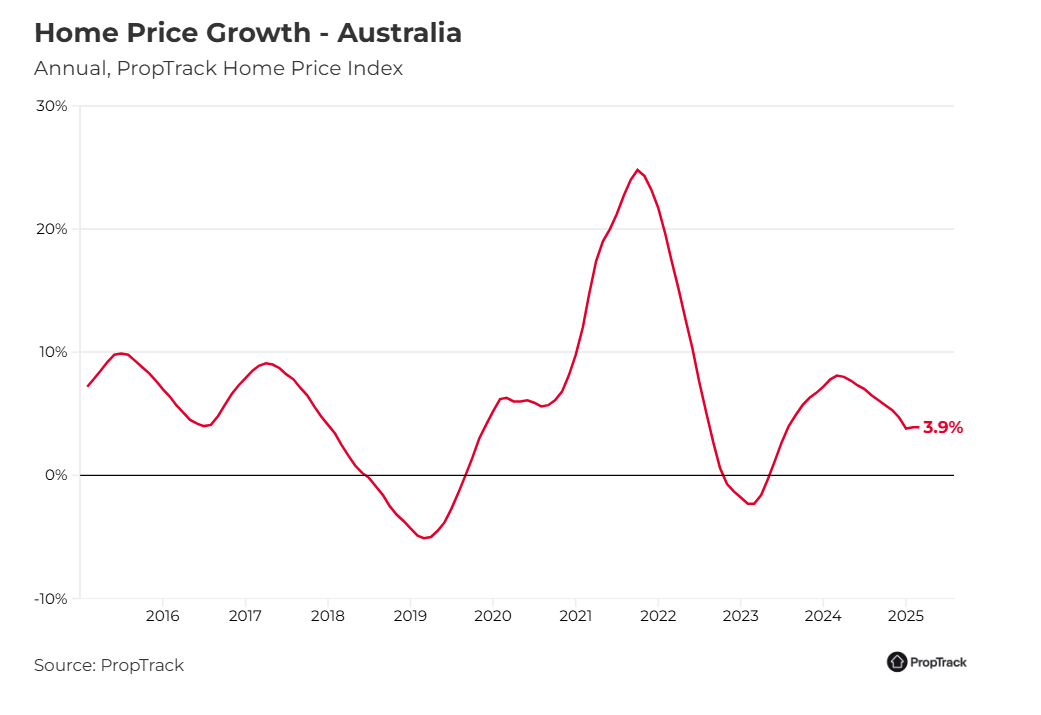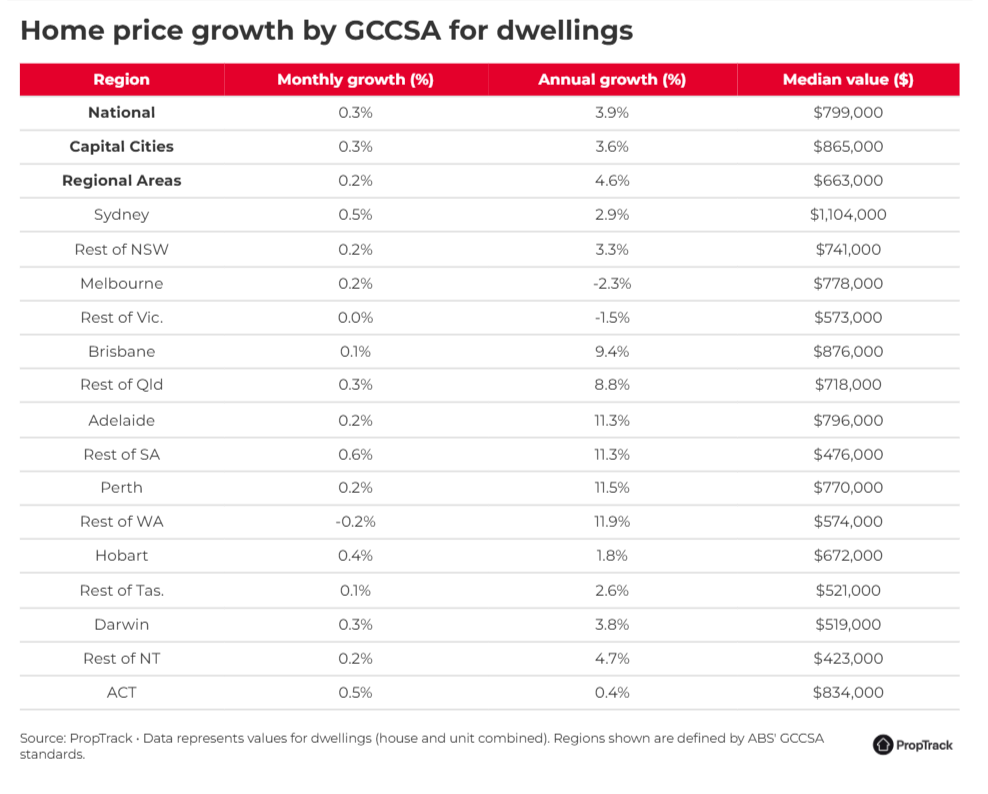

Home prices across Australia are witnessing a revival, attributed significantly to the Reserve Bank’s rate cut in February, according to the latest PropTrack Home Price Index for March.
“Home prices across the country climbed in March, following a clear shift in market momentum triggered by the Reserve Bank’s February rate cut,” said Eleonor Creagh (pictured), a senior economist at REA Group.
March recorded a modest but pivotal increase in national home prices, with a 0.27% rise, pushing values to new record highs.
Prices have surged by 3.91% compared to the previous year and show a notable 48% increase over the past five years. This recovery is most pronounced in capital cities, with a 0.31% price rise, while regional markets saw a more modest increase of 0.18%.
Notably, Canberra and Sydney led this growth spurt, while cities like Brisbane, Adelaide, and Perth experienced more tempered gains.

The strongest quarterly growth occurred in Melbourne, Canberra, and Sydney, pointing to a significant rebound in these markets after a slower pace at 2024’s end.
In contrast, cities like Adelaide, Brisbane, and Perth saw a slowdown in growth, suggesting that these areas might be reaching price stability or facing affordability constraints, PropTrack reported.
February’s rate cut, which lowered the OCR by 25 basis points to 4.1% after it had been on hold at 4.35% since November 2023, not only enhanced borrowing capacities but also bolstered buyer confidence, helping to counteract the minor price declines seen in previous months.
The rate cut’s immediate impact is estimated to increase the average person’s borrowing capacity by about 2-3%, although the exact effect varies based on individual financial circumstances.
This improvement in affordability, coupled with optimistic future price growth expectations, continues to drive buyer confidence, contributing to a healthier market.
The rate adjustment has also been credited with a notable decrease in mortgage stress and an increase in overall mortgage demand.
Looking ahead, while interest rates are beginning to decrease, contributing to buyer confidence and demand, structural factors like population growth and housing shortages are expected to sustain price growth.
However, affordability issues may temper the pace of growth, with expectations of more modest increases in the coming months compared to previous years, Creagh said.
Despite the variability in regional performances and the overarching economic challenges, the Australian housing market is showing signs of resilience and recovery, driven by favourable monetary policy and sustained buyer interest.
In a recent development, the Reserve Bank has maintained the OCR at 4.1% for the moment, signaling a cautious approach amidst ongoing economic evaluations.
As 2025 progresses, the housing market is expected to continue on a positive trajectory, albeit at a potentially slower pace
